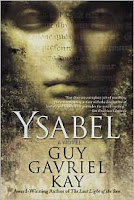STATUS: Responses are still trickling in so I’ll probably wait a day or two before tabulating the very unscientific results! Thanks to all who participated in the survey!
What’s playing on the iPod right now? DANCING IN THE DARK by Bruce Springsteen
In our June newsletter (which will probably go out this week), Sara talks about a query we received that began with this sentence: “Do you sell books to really big publishers for a lot of money? That’s all I am interested in and if you are small potatoes, please don’t bother responding…”
Insert picture here of Kristin snorting with laughter. The answer is yes, I certainly do sell books to big publishers for big money but I’m pretty certain I don’t want you as a client.
This opening is wrong on so many levels, I don’t even know where to begin this rant. I’ll just list some thoughts.
1. Why are you emailing me this query if you don’t know my sales history and what I’ve sold lately and in general, for how much? That info is certainly out there if one does the research.
2. How do you define “big” publisher? I know a lot of smaller, independent houses I’d love to do a book with. Algonquin and MacAdam/Cage come to mind. Aren’t they big enough?
3. How do you define “big” money?
4. It’s not always about the money. Now, it’s always foremost in my consideration but sometimes it’s about the right editor, the right house, the right vision and that doesn’t always equal the most money.
5. No agent can guarantee that a project will sell for X amount of money and if they tell you they can, they’re lying. Now sometimes my gut will tell me that a project will go at auction and for good money and sometimes I’ll cautiously share my optimism with the client but it’s always tempered with the caveat that I can’t promise a specific dollar amount.
6. Lastly, if you are in the publishing game for the money, you’ve got a rude awakening in front of you. Do I need to trot out the statistics on how many queries we get versus how many authors we take on and actually sell? Do I need to dig up the stats on how many authors actually make a full-time living solely from their writing? (And the stats are even smaller when we are talking about writers making their living from writing fiction!) Do I need to list the stats on how many author advances are under the 25k range? Or reverse and list some stats on how many authors make six figure advances?
So yep, we do occasionally sell to big publishers for big money but we’ll be saying NO to this query without a second thought. We just don’t need any clients with misguided attitudes. If that’s the case, our client list is full up.

